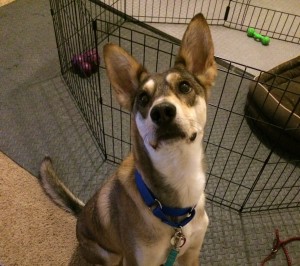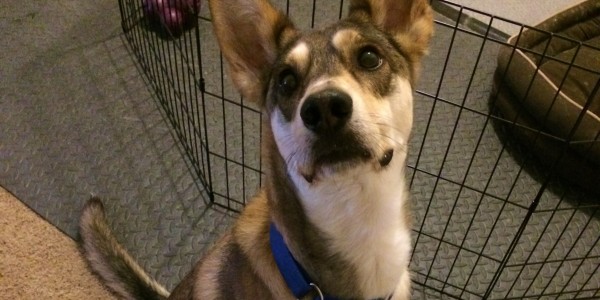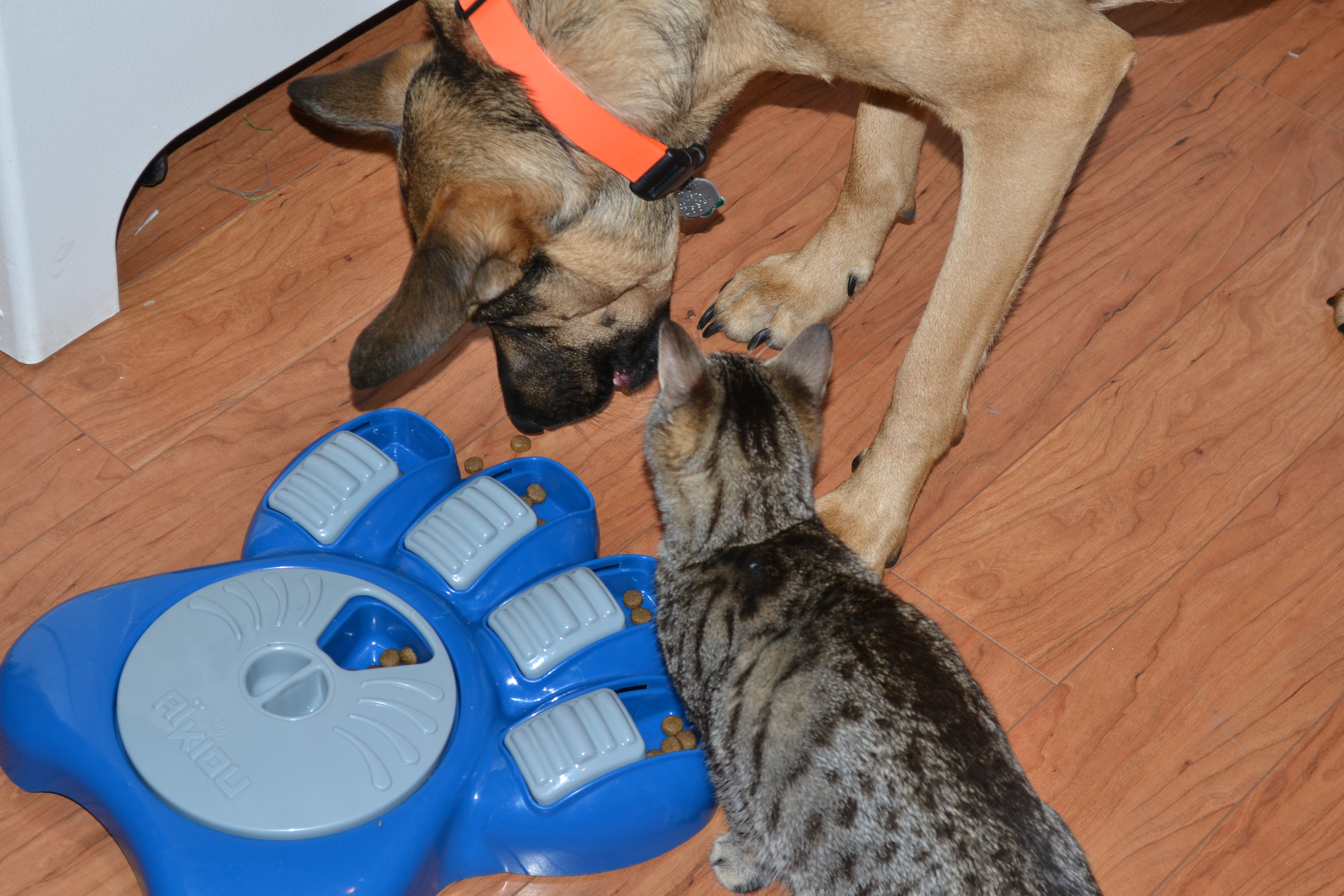In dog training there is always tension when trainers discuss whether they prefer to shape a certain behavior or lure it. Clicker training is a technique where we use a noise maker, the clicker, to mark/identify the exact behavior that the dog is getting the reward for. You can watch my favorite intro to clicker training video here.
What is Luring & Shaping in Dog Training?
When looking to train obedience behaviors in a dog, trainers usually lure or shape a behavior with clicker training. Luring involved using a food to guide the dog’s nose in a certain behavior so that they are likely to do the behavior. Example: lifting the treat up and over the dog’s head as they follow it with their nose so that their bottom touches the ground and the dog naturally goes into a sit. With shaping, trainers use the clicker to mark approximations towards the final behavior. Example: to shape a sit a trainer might click and treat each time the muscles in the back legs of the dog twitch, then for any downward motion, then when the tail touches the ground, then for the full sit.
Which is Better?
 It’s safe to say that neither is better than the other. I use both depending on what I need from the dog. When time is limited, I prefer luring to see quick progress. At the facility I work at, I train 20+ dogs everyday. Each one gets a 5 minute lesson with me. In order to see results more quickly, I use luring more frequently because most of the dogs are completely new to training and don’t have an understanding of how to work for rewards which means they don’t try to make the clicker go off. I prefer to use food to guide them into the behaviors I’m looking for then click and give them the treat when they get there. I quickly remove the food lure and just use my hand to lure them which then turns into a hand signal to cue the behavior. This gets them repeating the behavior quickly and without hesitation. I’m also not looking to turn these dogs into competition obedience dogs anytime soon.
It’s safe to say that neither is better than the other. I use both depending on what I need from the dog. When time is limited, I prefer luring to see quick progress. At the facility I work at, I train 20+ dogs everyday. Each one gets a 5 minute lesson with me. In order to see results more quickly, I use luring more frequently because most of the dogs are completely new to training and don’t have an understanding of how to work for rewards which means they don’t try to make the clicker go off. I prefer to use food to guide them into the behaviors I’m looking for then click and give them the treat when they get there. I quickly remove the food lure and just use my hand to lure them which then turns into a hand signal to cue the behavior. This gets them repeating the behavior quickly and without hesitation. I’m also not looking to turn these dogs into competition obedience dogs anytime soon.
Shaping takes a little longer because the dog must focus on what is making the clicker go off and try to repeat that movement. Dogs that are new to training barely even know that the clicker predicts treats so it can be time-consuming to wait for the dog to move about trying new behaviors. When I need speed and accuracy, I use shaping. When a dog discovers a behavior on their own that behavior tends to be stronger than one that was lured. Just like when somebody thinks up an idea on their own, they think it’s the best idea possible! I love having a thinking dog. One who tries new things to see if it will get him the reward. I believe it gives the dog a sense of empowerment and confidence that luring can’t give.
What Can the Dog Handle?
The other thing to consider is the dog, of course! Some dogs are masters at shaping and love guessing what you’re trying to teach them and some dogs shut down at the thought of messing up by not guessing correctly. For sensitive dogs, luring is a great way to teach them how to work for food and for them to learn that nothing bad will happen during training. The pressure of having their owner waiting for them to do something can be a lot of stress for a dog to handle. However, if the dog is too shy for you to get close enough to lure, you can start your relationship off by capturing behaviors you are looking for from a distance. This is when you wait for the dog to do the behavior, like waiting for the dog to sit on its own, and then click and treat when they do it. Then there are dogs that shut down at the sound of the clicker, but that’s for another blog post all together!
So it’s not that one technique is better than the other, but rather it depends on what you’re looking to gain through training, the time you have to train it, and the dog you’re working with. This is one time where trial and error can be the best way to find out what works for you and your dog. What technique do you use in your home and in your classes? Are they different? Why? Comment below!




